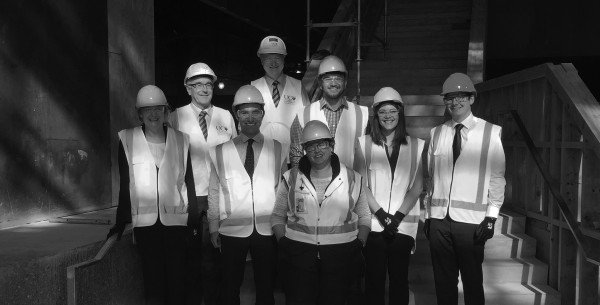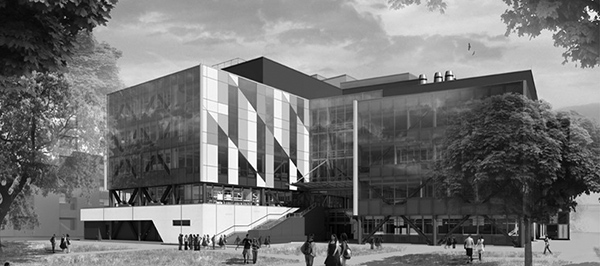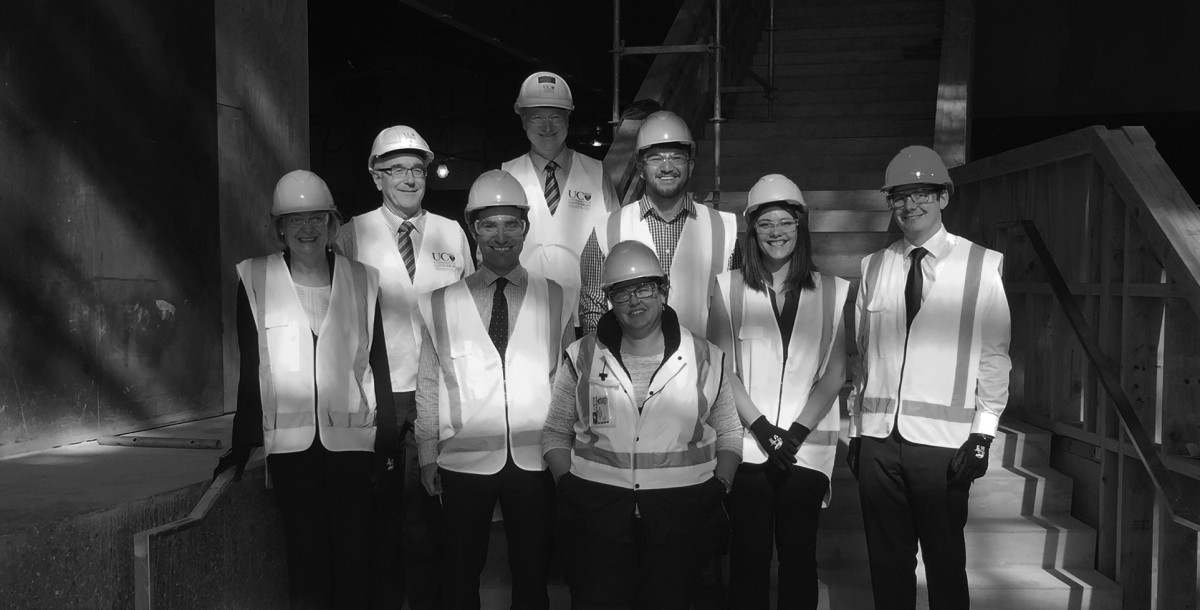University of Canterbury making substantial progress in its rebuild
University of Canterbury making substantial progress in its rebuild
The University of Canterbury (UC) continues to make good progress on its recovery from the 2010 and 2011 Canterbury earthquakes. Student enrolments are rising, many of its new state-of-the-art buildings are open or nearing completion, and UC is forecasting a return to a normal operating surplus in 2019.
The University of Canterbury (UC) continues to make good progress on its recovery from the 2010 and 2011 Canterbury earthquakes. Student enrolments are rising, many of its new state-of-the-art buildings are open or nearing completion, and UC is forecasting a return to a normal operating surplus in 2019.
“2016 was a pivotal year in the renewal of our University, in which we closed one of the most challenging and difficult chapters in UC’s long history, and opened a new and exciting one,” said Chancellor Dr John Wood in the university’s 2016 annual report.
“The transformation in our fortunes as an institution, now so visibly, indeed dramatically under way, has been hard won, and squarely based on massive efforts by so many of our people to deliver on first priorities: regaining student numbers; rebuilding and enhancing infrastructure; and restoring financial viability, while at the same time providing for the re-invention of an already world-class UC.”
Canterbury TEIs faced a number of issues following the earthquakes
Following the 2010 and 2011 Canterbury earthquakes, tertiary education institutions (TEIs) in the region experienced significant and substantial damage, followed by a large outflow of students, which also affected UC.
The Government responded by giving the Tertiary Education Commission (the TEC) the ability to continue to fund Canterbury TEIs at pre-quake levels, despite the drop in students. This allowed them the space and financial certainty to begin recovery efforts, and to retain important capability and capacity. Additional capital funding was also made available to aid recovery efforts. We have worked closely with affected institutions to manage this funding and ensure recovery efforts are on-track.
“The Canterbury earthquakes resulted in a unique set of problems for Canterbury TEIs as they not only had to deal with the physical effects of the earthquake, but also the effects on students and staff. As part of the Government’s commitment to rebuilding Christchurch, we have been heavily involved in working with Canterbury TEIs to help them recover,” says our Chief Executive, Tim Fowler.
In UC’s case, Cabinet agreed in 2013 to provide up to $260 million in capital funding to help UC rebuild its science and engineering facilities.
“Part of our role during UC’s recovery has been to oversee the Crown’s $260 million investment,” says Simon Hall, TEC Investment Manager for UC.
“This has included supporting and monitoring UC’s implementation of its major capital projects and working closely with its senior management. It’s also included the wider objectives of the transformation programme, such as the implementation of UC’s graduate profile, which aims to ensure students graduate with five key attributes, and its strategies for attracting students back to the university,” says Simon.
Rebuilding the campus and transforming the university
In 2013, UC began a 10-year $1.2 billion capital programme to rebuild its campus. As part of this wider programme, UC implemented its Futures Programme, which covered its major capital projects and transformation programme. The UC Futures programme is more than just about replacing damaged buildings with new, modern facilities. It’s about ensuring UC’s long-term future through transforming the way it teaches, the students it attracts, and the types of graduates it produces.
The UC Futures Programme covers three major capital building projects:
- the rebuilding of a significant proportion of the engineering precinct
- a major strengthening and rebuild of the former Commerce Building to accommodate the College of Education, Health and Human Development and a section of the College of Business and Law
- a $216 million, multi-disciplinary, innovative science research and teaching facility known as the Rutherford Regional Science and Innovation Centre (RRSIC).

Our Investment Manager Simon Hall (third from left) visits the Rutherford Regional Science and Innovation Centre, which is currently under construction. He is joined by staff from UC and the Treasury including. (from left): Robyn Nuthall, UC Futures Programme Director, UC; Bruce White, Deputy Registrar, UC; Simon Hall; Keith Longden, Chief Financial Officer, UC; Alex Hanlon, Executive Director of Learning Services, UC (front, centre); Abbas Nazari, The Treasury; Heather Maletino, The Treasury; and Richmond Tait, Northington Partners.
A science and innovation hub
The RRSIC building is designed to create a hub for the region’s science and innovation network and is the centrepiece of UC’s Science Precinct. Recently, Simon Hall visited UC with staff from the Treasury. They received an update on UC’s progress with its Futures Programme and visited the site of the RRSIC building.
When finished, the RRSIC will provide specialist teaching and research laboratories for the sciences and also accommodate UC’s Science and Technology Education Programme and the College of Science Outreach Programme. This space has been designed specifically for use by secondary school students and to encourage them to engage early in science education. It will enable the College of Science to expand its support to high school students wishing to obtain NCEA credits in topics such as radiation, genetics and forensic biology.
Stage Two of the RRSIC project will include partial demolition and rebuild of the neighbouring von Haast building which will hold office and study space as well as the College Office. It is due for completion in early 2019.
The RRSIC will also include an innovation hub that will enable researchers to connect with industry. By co-locating researchers from industry partners in RRSIC laboratories the aim is to create a one‐stop‐shop for science and innovation solutions and discoveries. It will also provide students with opportunities and experiences, such as experiential learning opportunities that will increase their employability upon graduation.
“The new RRSIC building will be an amazing, inspiring and exciting space in which to learn about science,” says Professor Wendy Lawson, Pro-Vice-Chancellor Science.
“It will give students a learning environment that encourages collaboration and interaction, not only with their peers, but also with the community, public organisations and industry.”

An architect’s impression of the completed Rutherford Regional Science and Innovation Centre.
